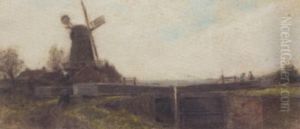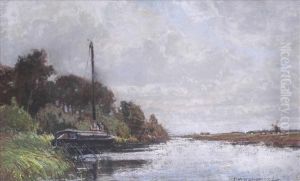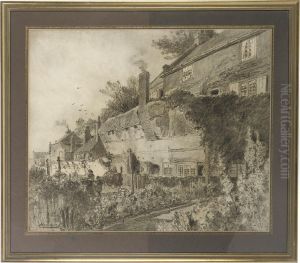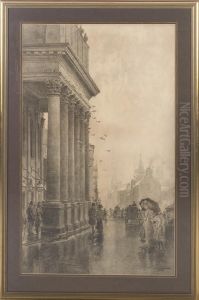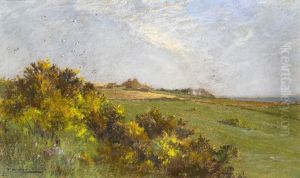Thomas William Hammond Paintings
Thomas William Hammond (1896-1935) was an English artist, illustrator, and teacher known for his detailed watercolors and pencil sketches of the English countryside, particularly the area around his home in Yorkshire. Born in Hull, England, Hammond developed an interest in art at a young age, which was nurtured through his education at the Hull School of Art. His talent was evident early on, and he quickly became recognized for his meticulous attention to detail and his ability to capture the essence of the English landscape and its architecture.
During World War I, Hammond served in the British Army, an experience that influenced his work in the years that followed. After the war, he returned to his passion for art, focusing on scenes of rural life, historic buildings, and the natural beauty of the English landscape. Despite the relatively short span of his career, Hammond established himself as a prominent figure in the English art scene of the early 20th century.
Hammond's work was widely exhibited during his lifetime, with several solo exhibitions that garnered critical acclaim. His artistic style was characterized by a blend of realism and romanticism, capturing the tranquil beauty of the English countryside with a sense of nostalgia and a deep appreciation for its historical heritage. Although he primarily worked in watercolors and pencil, Hammond also experimented with etchings and woodcuts, showcasing his versatility as an artist.
Tragically, Thomas William Hammond's life and career were cut short when he died in 1935 at the age of 39. Despite his untimely death, Hammond left behind a significant body of work that continues to be celebrated for its contribution to English art. His paintings and sketches remain highly valued by collectors and are featured in various public and private collections, serving as a lasting testament to his skill and passion for capturing the beauty of the English landscape.
